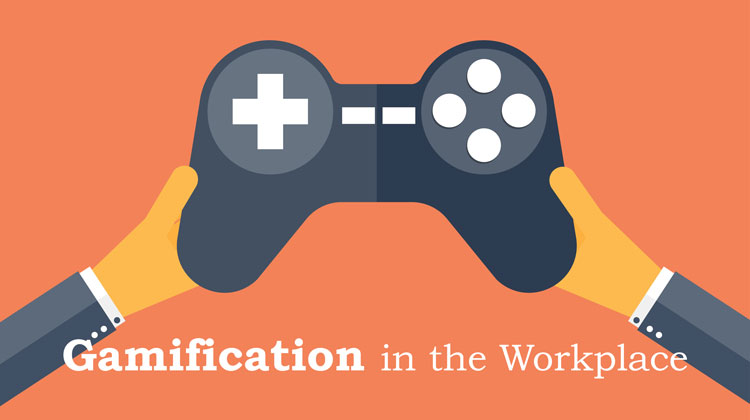As we are living in the fast-paced age of digital literacy and tech buzz words, it can become increasingly difficult to recognise which phenomena have potential disruptive qualities and which ones will fade over time. Many of us will agree that the rise of technological innovations should have the ultimate objective of increasing the quality of our lives. And what do most of us spend an enormous amount of our lives doing? Working!
Many of us will recognise times where we have lost a considerable amount of time and effort in an innocent game, enticing us to play for hours for free based on intrinsic motivation (Deterding 2013). As this sounds like every employer’s dream, gamification of the workplace seems to be the ultimate sweet spot between employees and employers.
Gamification is a recent trend that seems to be a straightforward solution in order to combine business with pleasure, but this is a popular misconception. Solely focusing on gamification in the workplace, many professionals worry about the oversimplication of implementation.
But what is making successful implementation of gamification so hard? It’s the added complexity of having to consider the interaction between systems of incentives, a user’s need and the possible implications on the work and emotional state of the employee (Deterding 2013). Firstly, it is necessary to create unique player profiles by mapping out personalities, interests, needs and tasks. Everyone of is different, confirmed by Domínguez et al. (2013), whereby in an experiment some participants thrived under added competitive pressure and others felt discouraged. Moreover, gamification is often directed at game elements, rather than actual tasks (Ryan and Deci 2006). If work requires in-depth and extensive thinking in an environment with dynamic interaction, there can be many external factors influencing the ultimate ‘score’. It may not be a fair representation of expertise and the process of decision-making. Lastly, on a more practical note, technical bugs, inefficient design and the absence of instant rewards and feedback for qualitative work can cause irritation and decrease the engaging effect.
All in all, the gamification hype represents a likable shift away from monetary motivation to a more personal type (Deterding 2013). Many new hypes have great potential for bettering out lives, but it will be up to us to assess their feasibility in practice. That gamification still needs extensive, further research and time and effort for a successful implementation is evident, however, I do think it has great potential in other environments than the working place. After all no blockbuster game was ever build without money, time, effort and a little trial and error.
Deterding, S 2013, ‘Gamification: Designing for motivation’, Interactions: Social Mediator, vol.19, no.4, pp. 14-17
Domínguez. A & Saenz-de-Navarette, J & de-Marcos, L & Fernández-Sanz, L & Pagés, C & Martínez-Herráiz, J 2013, ‘Gamiwying learning experiences: Practical implications and outcomes’, Elsevier B.V., vol.63, pp. 380-392
Ryan, R M & Deci, E L 2006, ‘Self-Determination Theory and the Facilitation of Intrinsic Motivation, Social Development, and Well-Being’, American Psychologist, vol.30, no.4, pp.344-360

